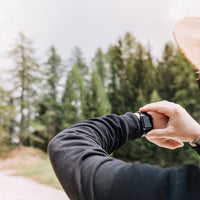Often times, we get questions about the difference an ultralight pack will make on people’s hikes. While an ultralight pack will make a substantial difference on your comfort level during a hike, equally beneficial is simply know how best to pack your pack.
Knowing What to Bring & How to Bring It
Once you have the best hiking pack you can find for your body, the next step is to cram it full of everything you’ll need out on the trail. While your specific needs will vary greatly depending on the type of trip you’re taking and the conditions you’ll be taking them in, there are certain methods of packing that make carrying the load much easier, not to mention allow you to bring more of what you actually need.
Figure Out Your Needs
One major mistake we see hikers make all the time is bringing everything that isn’t nailed down or things they will almost never need to use. Remember, everything you bring with you has to be carried with you throughout your hike; every ounce of weight you bring needs to add value to your trip or should be left at home. While we’re not saying to scrap the things you would only need in case of emergency (first aid kit, etc.), we are saying that taking your 2 pound vat of hair gel may be better left under the bathroom sink.
Optimal Packing Technique
There is a method to packing a pack, following the best technique means you’ll be able to bring more and have it feel like less. The first thing to note is simply this: Where things go in your pack matters. If you pack heavy things on only one side of the pack or at the very bottom (near your hips, for instance), then you’ll find yourself off balance and unknowingly working far harder to carry the same amount of weight. Your medium and heavy things should rest around your shoulder blades whenever possible.
Another packing tip is to use all corners of the pack to their full potential. Your rain poncho can take up almost no space and weight if it is correctly packed into the corner of a pack, or it can sit in the bottom of your main pouch space, taking up vital room and remaining generally inaccessible. You want your heavier gear to be closer to your back, not crammed in after your collapsable or pliable things. Another tip is to take care to purchase a waterproofed pack, meaning that the things inside your pack won’t get damaged or ruined in the event of heavy rainfall; external rain covers are also made for packs that don’t include a waterproof lining (the best hiking packs typically do, but it never hurts to be sure).
Find Your Next Pack Today
At Light Hiking Gear, we have put real science to work in each of our Bodypacks. Through strategically-applied engineering and a willingness to think outside the box, we have designed a pack that is sure to feel better, longer - because it was designed to do so. Discover the difference a truly well-designed hiking pack can make on your adventures!
Browse our entire selection of packs available online today!




0 comments